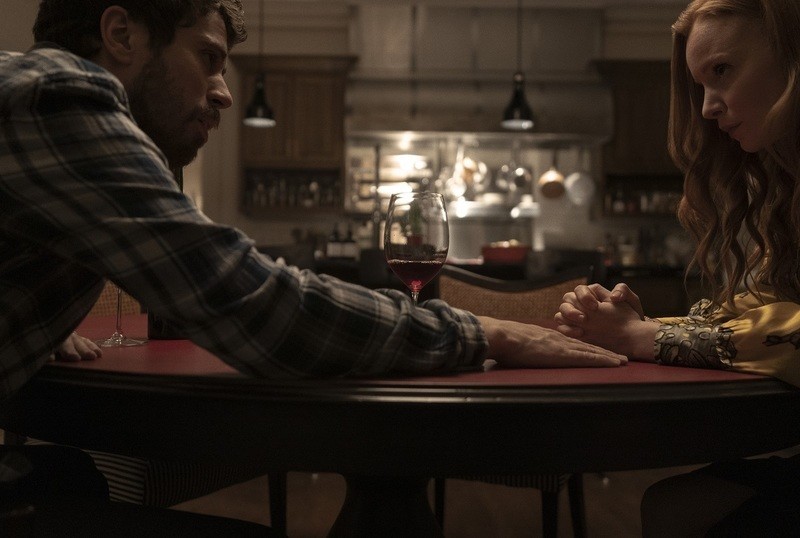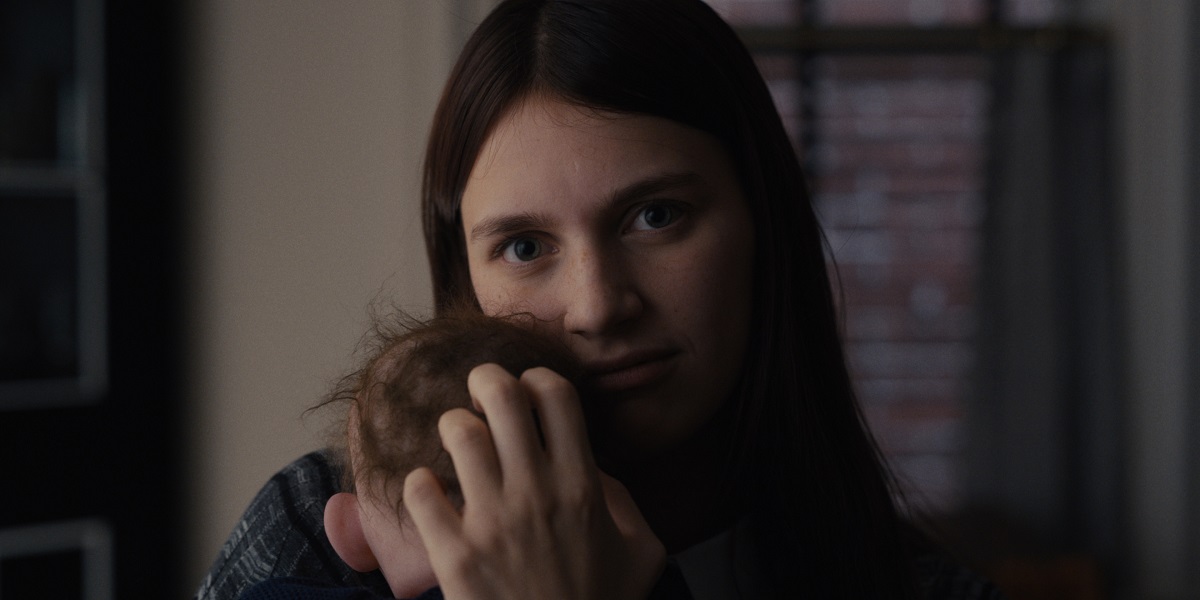Apple TV has their most ambitious show to date (with all respect to the fans of the Blind Aquaman show) in the fascinating “Servant,” directed and produced by M. Night Shyamalan. The filmmaker behind “The Sixth Sense” and “Split” brings some of his strengths in storytelling (and his ace cinematographer Michael Gioulakis, increasingly one of the best in the business) to this claustrophobic, Polanski-esque vision of domestic instability and possible insanity. It sags in the middle – this seems to be a defining trait of streaming narratives – and you should be warned that the end is filled with more cliffhangers for a second season than questions answered, but there’s enough to like here to keep you watching. It’s eerie and unsettling in ways that television often tries to be but rarely accomplishes.
Dorothy (Lauren Ambrose) and Sean Turner (Toby Kebbell) have lived through the unimaginable tragedy of the loss of an infant. Their baby Jericho died, and Dorothy snapped. She went into an entirely catatonic state, broken out of it only when her doctor suggested a therapy doll could help with her grief. So, Dorothy walks around the apartment with a baby doll. She puts it in a crib. She changes it and speaks to it. Sean is terrified that if he breaks the routine they’ve established that it will send Dorothy psychologically spiraling again, so he plays along. And then the nanny shows up.

Leanne Grayson (Nell Tiger Free) was hired before Jericho’s passing, so Sean agrees to pay her for at least the month trial period to get through this grief process, but Leanne is an odd duck herself. She too speaks to Jericho as if the doll is real, even when Dorothy is not around. Sean starts to wonder about her agenda, and even if he’s the one going crazy. Dorothy’s brother Julian (an excellent Rupert Grint) is even more suspicious of Leanne, and drinks regularly enough to make sure he’s intoxicated when this whole charade collapses. And then something happens at the end of the premiere to twist everything in a different direction.
There are multiple mysteries at play throughout the first season of “Servant,” most of them hinging on Leanne’s past, her motives for being there in the first place, and exactly what happened to baby Jericho when he died. A lot of these are revealed by the end, although don’t expect closure for a show that’s already been renewed. Without spoiling anything, the final episode of the first season opens up potential for season two to be radically different and even stranger. It’s almost like a 5-hour Shyamalan movie and this is the “Split” to next season’s “Glass.”
Yes, I said five hours! The ten episodes of “Servant” are all about 28-32-minutes, which is in itself a brilliant decision. One of the lessons of streaming services is that just because a show can be an hour doesn’t mean it should be an hour. These episodes feel tighter, and the narrative would have completely fallen apart if someone had tried to stretch them to 60 minutes.

Shyamalan and creator Tony Basgallop also feel more ambitious with character, theme, and setting than a lot of shows that have tried for something similar. For starters, they allow us to look skeptically at two people who just lost a baby in that something seems off about Sean and Dorothy from the very beginning. They’re not awful people, but their materialism and self-centered personalities keep peeking through, not just in their dialogue or Dorothy’s tin reporting but in the very set-up of their home. I love the fact that “Servant” rarely leaves the Turner apartment and never leaves their block. Other excursions take place via Skype or on TV broadcasts. We’re trapped in this sterile, overly perfect world with these people, and the location becomes as unsettling as what’s happening there. It helps to have a master like Gioulakis shooting the show. He shot “Glass” and “Us” this year alone. He brilliantly uses the spaces of the Turner home, most of them lit by those cold, pale lights that we associate with wealth. The Turner home is so free of warmth in terms of space and color that you want to put on a sweater when you’re watching this show.
Even the jobs of the Turners play a thematic role. Dorothy is a truly mediocre reporter, more concerned about her appearance than the news she’s broadcasting. Sean is a “professional bon vivant,” one of those people who tries to find new ways to cook gross things for rich people. Consequently, he’s always doing something slightly unsettling like skinning live eels for a dish he’s working on or making haggis. That his sense of taste seems to have disappeared – possibly due to the tragedy – only adds to the feeling that he’s detached from what’s happening around him.
Of course, “Servant” demands regular renewal of your suspension of disbelief. Especially in the mid-section, there are times when a new episode begins and the characters lack the urgency they would naturally have after what they discovered in the last chapter. Honestly, if you can get over that, a slight dip in urgency in 4-5, and the outright insanity of the finale, there’s more than enough to like here. And I’m fascinated to see where it goes in season two now that it feels like Shyamalan is opening his toybox for another chapter that should be much kookier than this one. Apple TV has struggled to find a hit in its first month. Who could have guessed it would take a doll to give the streaming service its first major sign of life?
Whole season screened for review.












